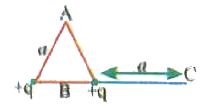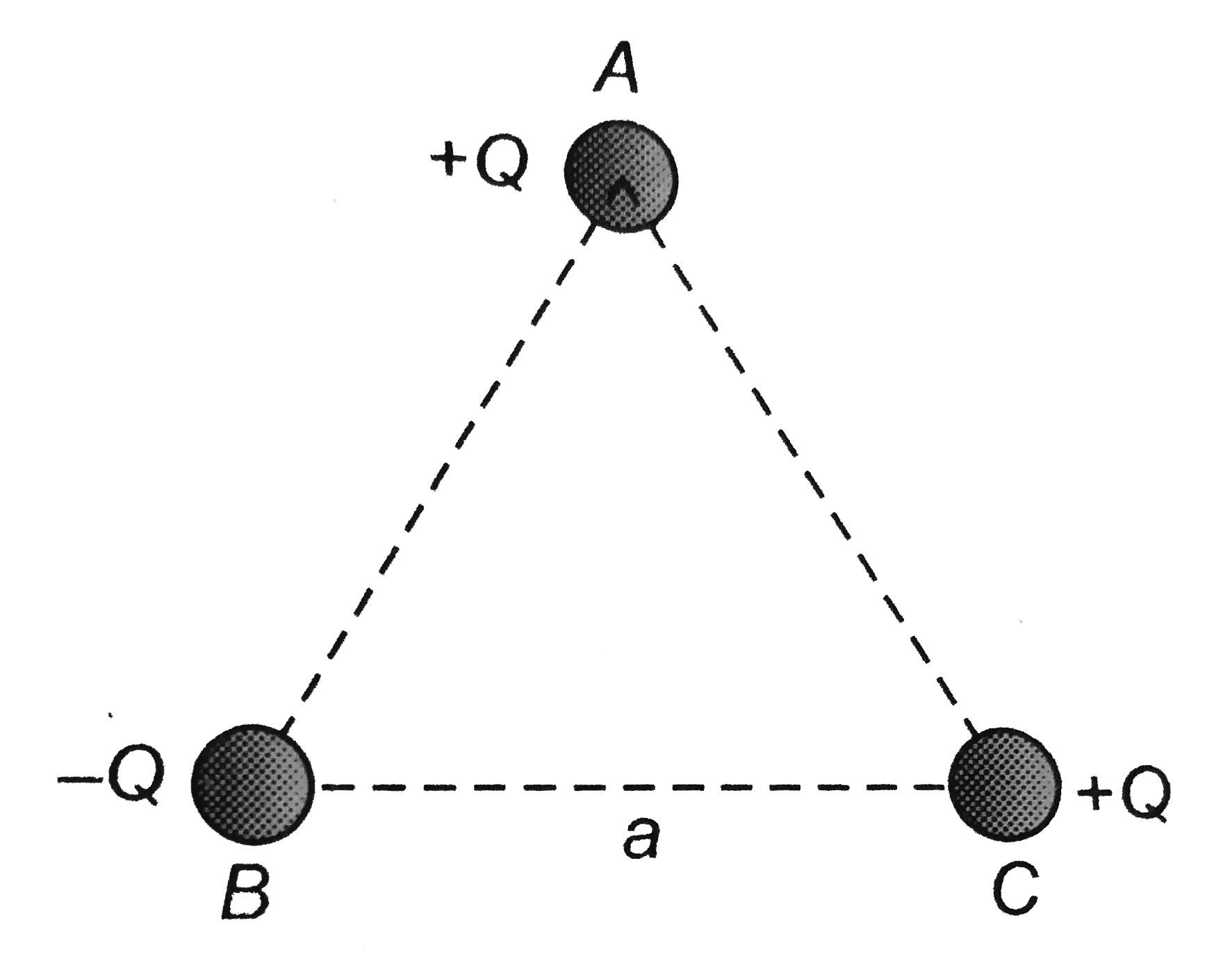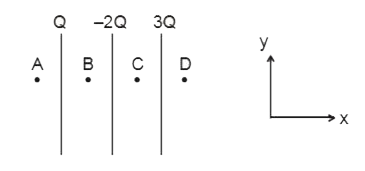Two charges each +q are at the vertices of the equilateral triangle of side a as shown. A is a vertex, B is midpoint of the side and C is a point at a distance as from the right vertex as shown in the figure. THE magnitudes of electric intensities at A, B and C are respectively. The correct ascending order of these intensities is

EB<EA<EC
EC<Ea<EB
EA<EB<ECd
EB<EC<EA
The correct Answer is:C
The field at A is √3kq2/a2, the field at B is zero and the field at C sum of kq2/a2 and kq2/4a2.
Topper's Solved these Questions
Similar Questions
Knowledge Check
- Question 1 - Select One
Equal charges q are placed at the vertices A and B of an equilatral triangle ABC of side a. The magnitude of electric field at the point C is
Aq4πε0a2B√2q4πε0a2C√3q4πε0a2Dq2πε0a2 - Question 2 - Select One
Three charges are placed at the vertices of an equilateral trianlge of side a as shown in the following figure. The force experienced by the charge placed at the vertex A in a direction normal to BC is
 AQ2/(4πε0a2)B√3Q2/(4πε0a2)CZeroDQ2/(2πε0a2)
AQ2/(4πε0a2)B√3Q2/(4πε0a2)CZeroDQ2/(2πε0a2) - Question 3 - Select One
Three charges Q,(+q) and (+q) are placed at the vertices of an equilateral triangle of side l as shown in the figure. It the net electrostatic energy of the system is zero, then Q is equal to
 A(−q2)B(−q)C(+q)DZero
A(−q2)B(−q)C(+q)DZero
Two charge +Q,−Q are placed at the two verticels of an equilateral triangle of side 'a'. Then the intensity of electric field at the third vertex is
View SolutionThree large conducting parallel sheets are placed at a finite from each other as shown in figure. Find out electric intensity at point A, B, C & D.
 View Solution
View SolutionThree charges are placed at the vertices of an equilateral trianlge of side a as shown in the following figure. The force experienced by the charge placed at the vertex A in a direction normal to BC is
 View Solution
View SolutionThree point charges q are placed at three vertices of an equilateral triangle of side a. Find magnitude of electric force on any charge due to the other two.
View SolutionFive point charges each of charge + q are placed on five vertices of a regular of side h as shown in the figure. Then
View Solution


